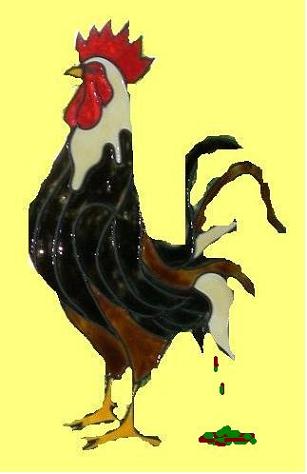The PM had announced that the Consumer Price Index (CPI) is beign reviewed to reflect real situation on the ground and to make the CPI more helpful and relevant (whatever that means).
(source: The Star)
Can the people take this announcement as an indirect admission that the CPI has not been accurately calculated before and the figures published were “unreal”? How can this be? The boss from the Department of Statistics had only recently told the press that “Our inflation rate calculation is correct and so are our economic growth figures” (funny! No one even asked him the question about “economic growth figures”. Why is he saying it?).
This is really screwed-up! Perhaps the aunty selling fish at the market was right all this while. Inflation rate is actually higher that what they said. It makes you wonder if the other key figures published are accurate or not? Those vital economics figures, those population statistics, population distribution, income distribution…… Wow! It's scary when one starts to think about it.
Curious to find out who will be those involved in the reviewing exercise ? Do you think it’s going be the same bunch of geniuses from the Department of Statistics that told the public confidently that they were correct before? Hmmm...
=============
NST Online » Local News
2008/06/08
Inflation rate: Calculations are correct
 BEING the Department of Statistics' senior director of the prices, income and expenditure division, Kamarudin is the man of the moment.
BEING the Department of Statistics' senior director of the prices, income and expenditure division, Kamarudin is the man of the moment.
With escalating prices in the market place and doubts as to the CPI figures, he takes time off his busy schedule to explain why the figures are as accurate as can be.
(The consumer price index (CPI) is a measurement of the average price of consumer goods and services purchased by households. It is obtained by calculating, monthly, the cost of a fixed basket of commodities purchased by a typical consumer during a given month. The percentage change in the CPI is a measure of inflation.)
Q: There are claims that the way the inflation rate is calculated is wrong. What do you say?
A: Our inflation rate calculation is correct and so are our economic growth figures.
In 2007, the rate of inflation increased by two per cent over 2006's CPI of 103.5. But compared with 2005, there was an increase of 5.7 per cent.
In the first four months of this year itself, there was a 2.7 per cent increase compared with the first four months of last year.
Just for food and non-alcoholic beverages, the index increased by 4.7 per cent in the first four months of the year compared with 2007. The highest increase was seen for milk, cheese and eggs.
Overall, 31.4 per cent of the composition of the basket is for food and non-alcoholic beverages, while 21.4 per cent is for household expenditure and 15.9 per cent is for transport and fuel expenditure.
Some of the other items in the basket include health, education and entertainment.
Q: So are the weights allocated for the categories in the basket proportionate?
A: Yes, they are. We collect 460 main items and 920 sub-items. Using the fish example mentioned, we collect 34 types of fish. I don't understand what other types of fish you want us to collect.
Even for milk, we collect 13 types, including two infant formulas.
We conduct the Household Expenditure Survey (HES) every five years to know what Malaysians are spending on.
The weights used in the calculation of the CPI are obtained from the HES.
There are 12 categories of items in the basket based on the United Nations' "Classification of Individual Consumption According to Purpose".
Q: How do you decide on the weights?
A: We obtain this from the HES. The last one was in 2005 and we surveyed 25,000 households nationwide from all income brackets over a period of a year.
From the data collected, we found that 31.4 per cent of household expenditure was on food. So these weights decided upon are from the people.
Q: Should the HES be conducted more frequently? Isn't five years too long a period?
A: Yes it should, but it costs RM15 million to conduct just one survey. So it is too expensive to conduct one annually and it also involves government policy.
Q: Do the weights change much every five years?
A: Yes they do for certain categories.
In 2000, the weight for food and non-alcoholic beverages was 34.9 per cent, while for the current basket, it is 31.4 per cent.
For transport, it was 13.9 per cent in 2000 and it increased to 15.9 per cent in 2005.
For restaurants and hotels, the figure was 1.9 per cent in 2000, while for 2005 it increased to three per cent.
As people become more affluent, they spend less on food and more on other items.
Q: Malaysia's closest neighbours record much higher inflation rates. Why does it seem that we are isolated from the true scenario?
A: Among the Asean countries, we do have one of the lowest inflation rates. This is without taking into account the recent fuel price hike.
Singapore and Thailand have different scenarios.
When the price of petrol goes up, their governments do not subsidise the rates, so transport costs there are determined by market prices.
Therefore, the rate of inflation rises. But for us, the government subsidises petrol costs up to a limit...
(full story at NST)
--------------------------------------------------------------





No comments:
Post a Comment